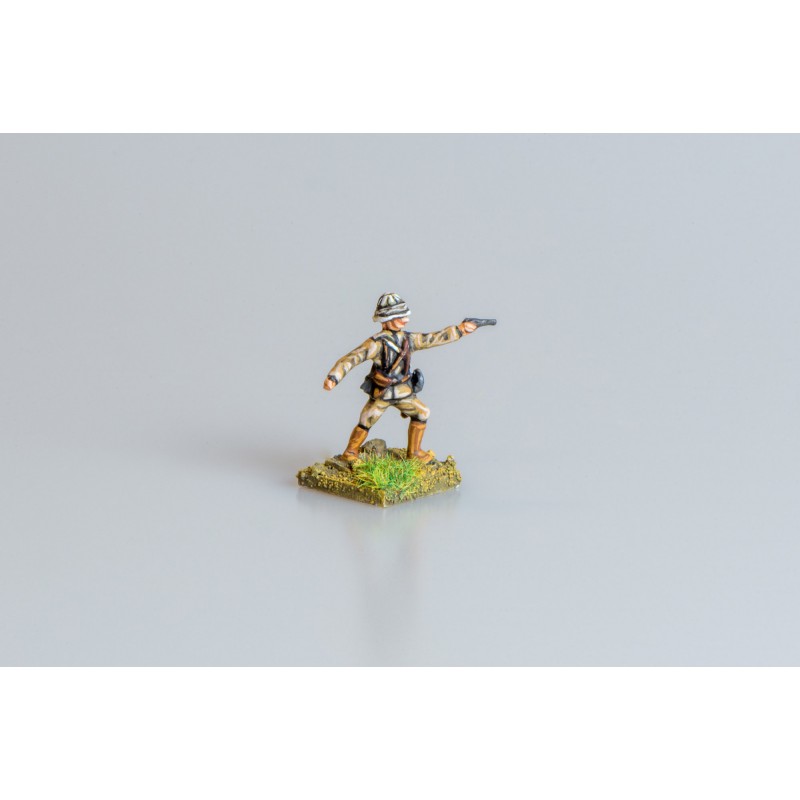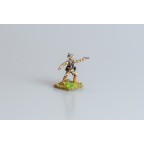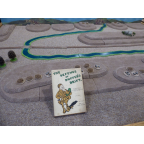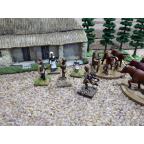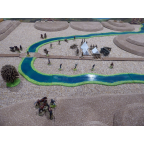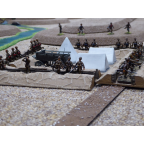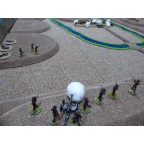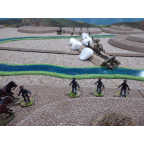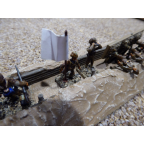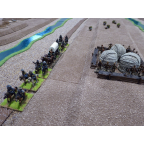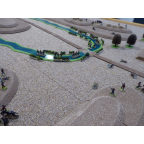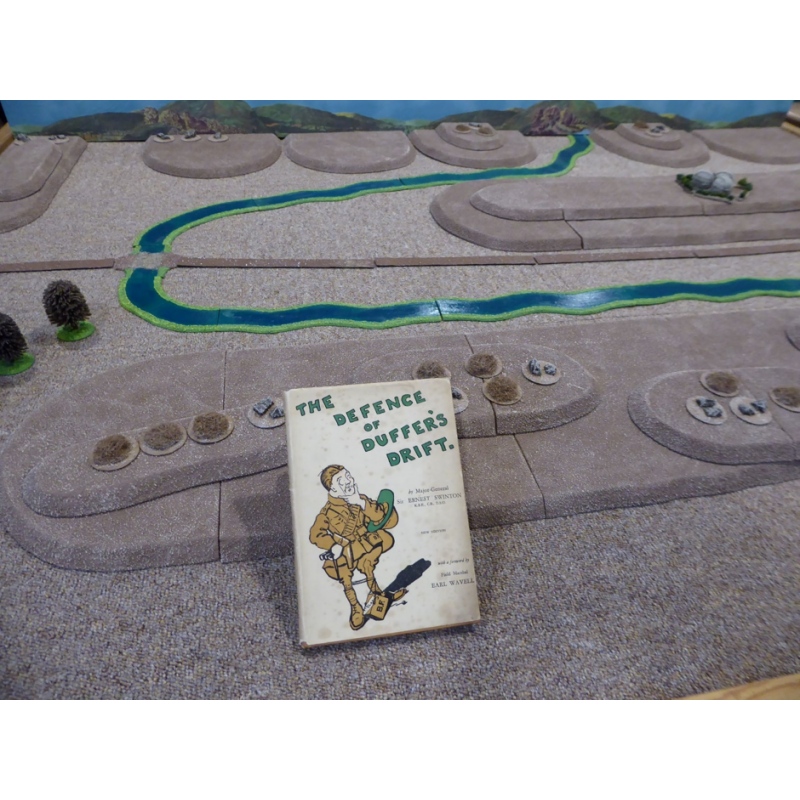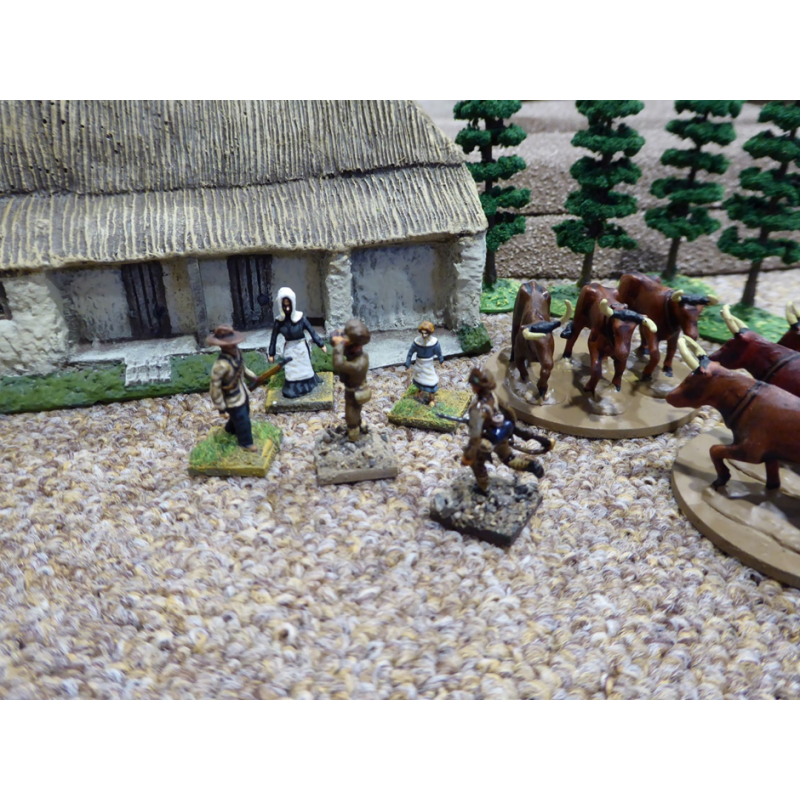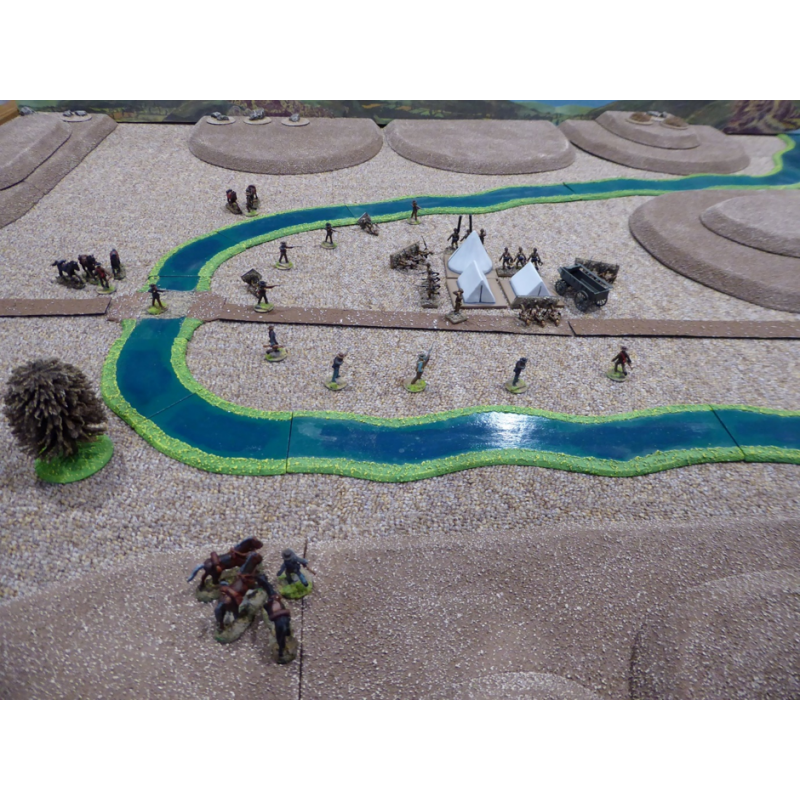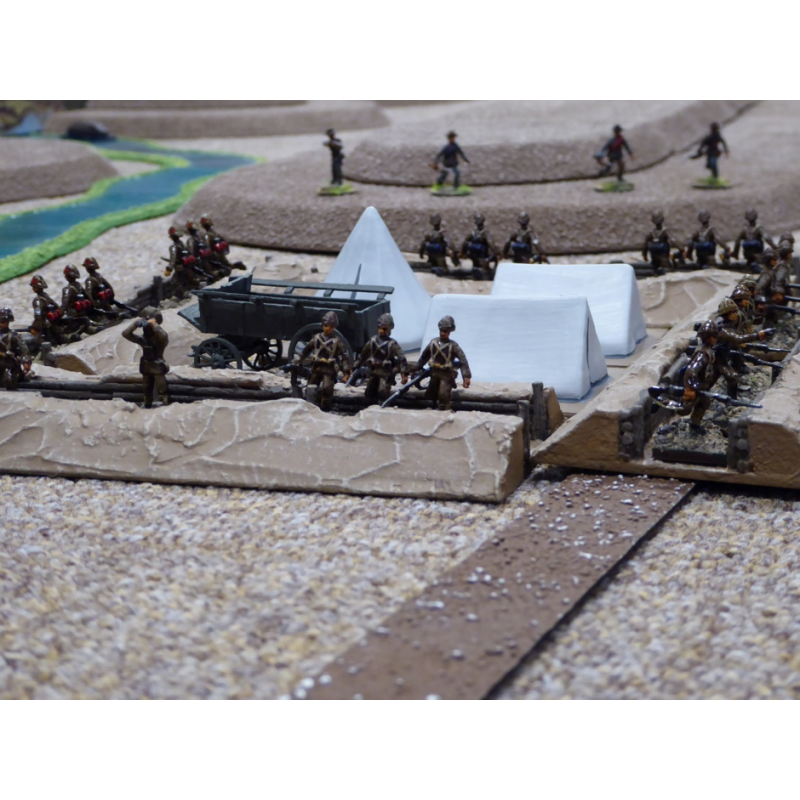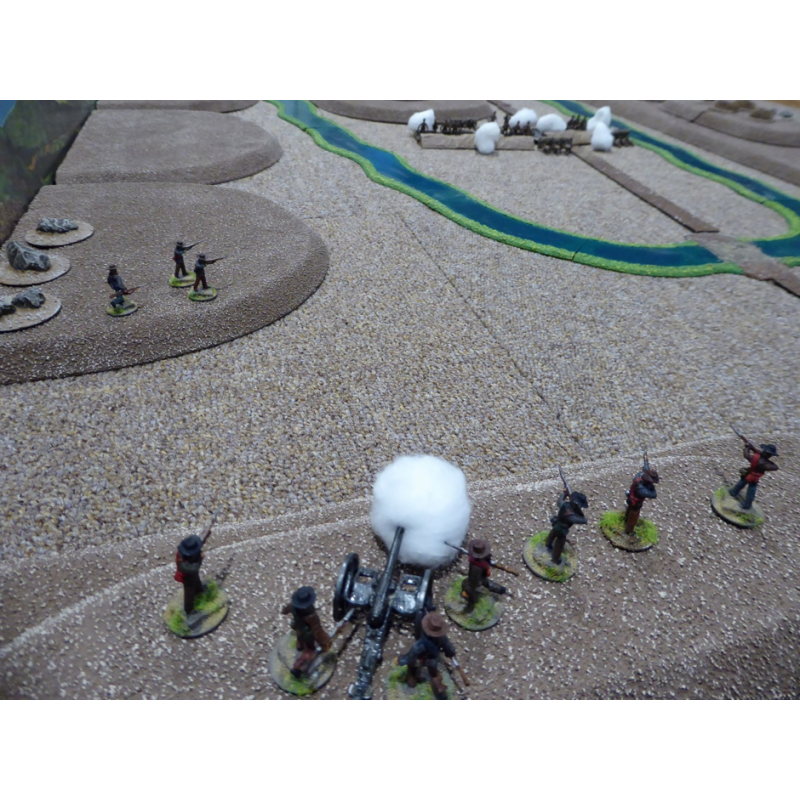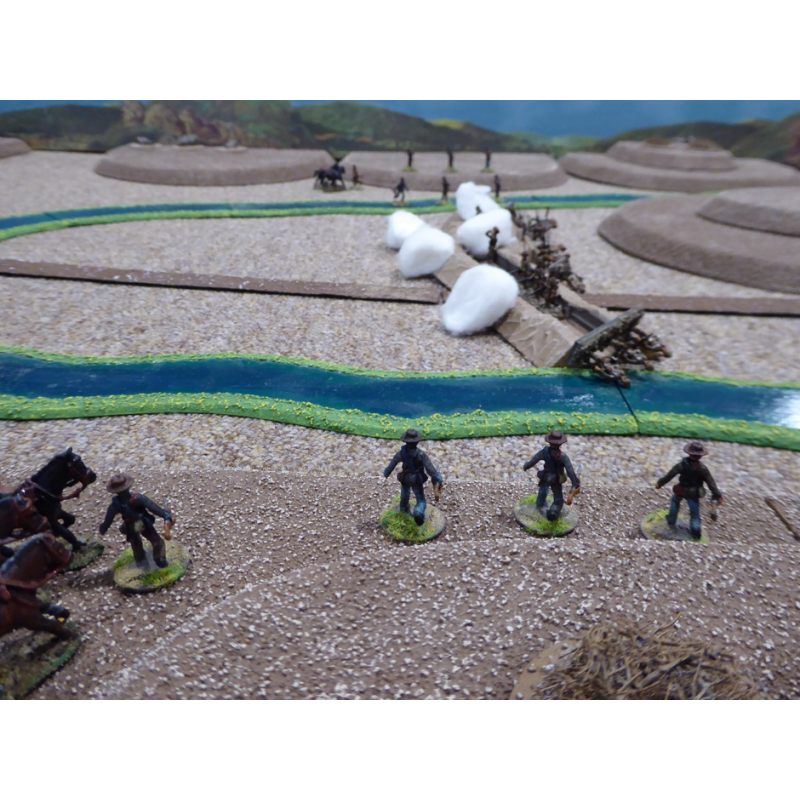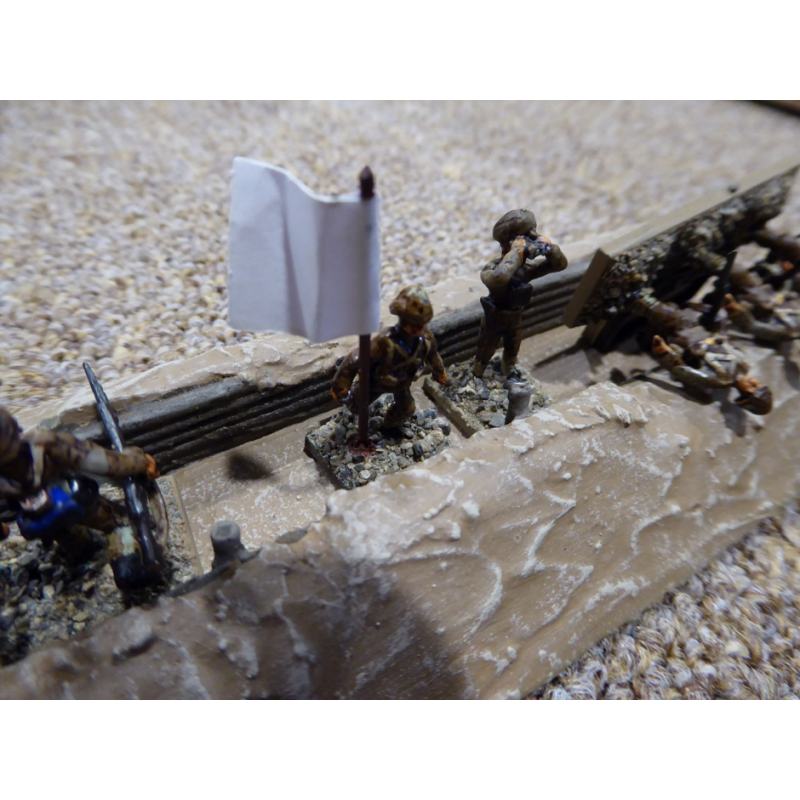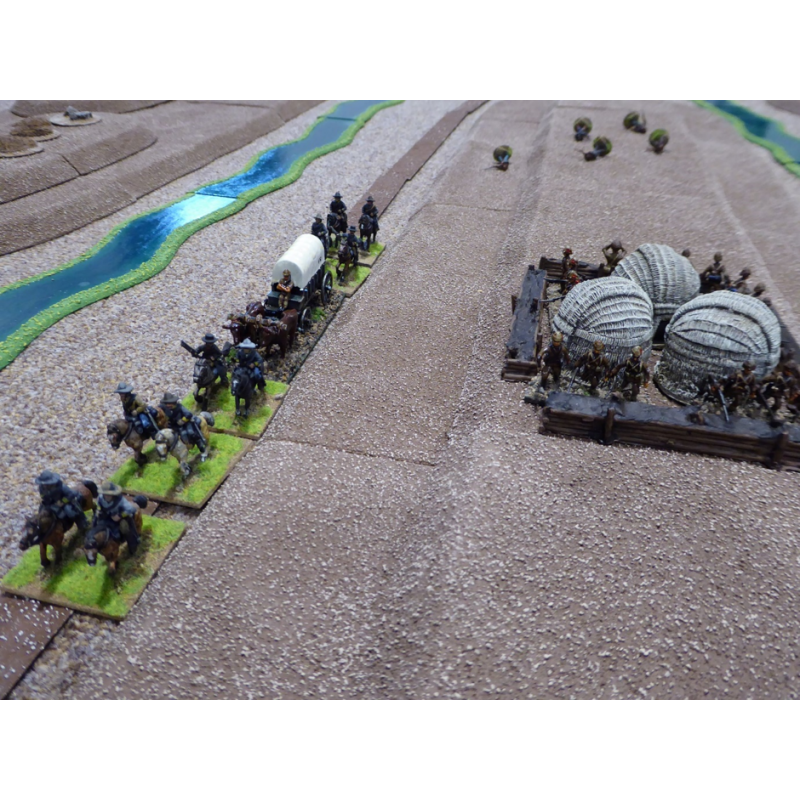This product is sold unpainted.
WARGAMING THE DEFENCE OF
DUFFER’S DRIFT USING JACKLEX MINIATURES
‘The Defence of Duffer’s Drift’ (Major General Sir Ernest Swinton KBE, CB,
DSO) has been a staple of military instruction since it appeared in 1907 in the
‘United Service Magazine’. Although the setting is the turn of the century
Anglo Boer War in South Africa, the story is universal in the dilemma it poses
to any lieutenant (or wargamer!) in any war – how one adapts a piece of terrain
to the accomplishment of a difficult mission with limited manpower, weaponry
and communication.
Lieutenant Backsight Forethought (BF to his friends – also an acronym for
bloody fool) has been left in charge to hold Duffer’s Drift, the only ford on
the Silliassvogel River available to wheeled traffic. It is his first independent
command. Here is his chance for fame and glory!
SITUATION.
·
Ground. The river is a sluggish stream crawling along the very bottom of its
bed with steep banks covered with dense thorn and other bushes. 2000 yards to
the north of the drift is a flat topped, rocky mountain (Regret Table Mountain)
and about a mile to the north east is a sugar loaf kopje (Incidentamba) with a
farm on its near side. About 1000 yards to the south of the drift is a convex smooth
hill (Waschout Hill) with a native kraal on top. The ground between these
features is flat open veld. (IMAGE 1)
·
Enemy. The enemy (up-to 500) might possibly attack from the north but no enemy
were known to be within a hundred miles. The enemy had guns.
·
Friendly Forces. 50 NCOs and men of the Duke of Wellington’s Regiment (Dukes)
equipped with magazine rifles.
·
Mission. Hold the drift at all costs in order to stop the enemy crossing south of
the Silliassvogel River.
FIRST SCENARIO
After a long march to the drift Lieutenant BF pitched a small tented camp
on a spot just south of the drift, leaving defensive arrangements to the morning
when the men would be less tired. He trudged with field glasses and Kodak to
the gleaming white walls of the little Dutch farm, nestling under the kopje to
the north east to meet the owner, Mr Andreas Brink and his family. (IMAGE 2)
Informed of the British presence by Brink, the Boers surrounded the camp
in the night and at dawn killed the sentries and rushed the camp from three
sides talking the little garrison by surprise. The Dukes had 10 killed and 21
wounded. The Boer convoy with guns easily crossed the drift. (IMAGE 3)
SECOND SCENARIO
The camp was now fortified with a shallow trench all round. Brink was not
allowed to visit the camp and two four man examining posts were placed on Waschout
Hill and 1000 yards to north.
The Boers again used darkness to approach the British camp, neutralised
the two examining posts and fired at short range into the camp from all sides. The
defenders could see no one and eventually the position became hopeless.
Lieutenant BF, with his casualties mounting (24 killed and 6 wounded) hoisted
the white flag. (IMAGE 4)
THIRD SCENARIO
Considering the lessons of the last two engagements Lieutenant BF moved
his position to 700-800 yards south of the drift and dug a shallow trench 50
yards long broken back at a slight angle, facing north. He secured Brink in the camp and placed an
entrenched guard of six men on Waschout Hill.
The lookout on Waschout Hill reported Boer movement near Incidentamba Farm
and soon after the British position was under artillery fire and then rifle
fire from east, west and south. The combination rendered the defenders
powerless to do anything and Lieutenant BF reluctantly put up the white flag. (IMAGE 5)
FOURTH SCENARIO
All natives and civilians were brought in and secured in the camp. The existing
trench was narrowed and deepened to 3’ 6” with a parapet 12” high and area hollowed
out to give some overhead cover. All looked well for any fight.
This time the Boer artillery had a much lesser effect on the position.
However, the Boers still managed to fire into the trench, enfilading the right
half trench and managing to work their way into the rear of the position after
destroying the lookout on Waschout Hill. After three hours of firing the Dukes
had 25 killed and 17 wounded. It was time to surrender. (IMAGE 6 and 7)
FIFTH SCENARIO
After much contemplation Lieutenant BF decided that control of the high ground
was the key to any future engagement. The position was moved to Waschout Hill
with short lengths of deep firing trench each holding five men dug round the
native kraal. Firing positions in the native huts for 3 men were also
constructed. All was well concealed.
As the Boers approached Lieutenant BF realised in horror that the bulging
convexity of the hill hid the drift and the road running to the west from his
position. However, the Dukes managed to surprise a party of Boers scouting
south of the drift within 250 yards of the position. Unfortunately, the Boers
moved their wagons in dead ground under mutually supporting fire of guns and
rifles. There were few British casualties, but the drift had not been secured.
(IMAGE 8)
SIXTH and FINAL SCENARIO
An idea against all the tenets of his training now began to formulate in
Lieutenant BF’s mind. It was to hold the river bed and banks on each side of
the drift. The advantages were, perfect concealment and cover from sight,
trenches and protection against both rifle fire and gun fire practically ready-made.
communications under good cover, the enemy in full view and good fields of
fire.
The Boers were again surprised, and an advance party lost nine men to
British fire from the river banks. Boer artillery burst all along the river,
but the gunners could not identify their targets. A Boer approach from south was
stopped by the detachment on Waschout Hill. The fight went into the second day
and in a night attack 20-30 Boers were killed. The Boers could not achieve a
crossing and retired. The Duke’s casualties were 11 killed and 15 wounded but they
and their young Subaltern had held the drift and won a victory! (IMAGE 9)
The figures used in the game were jacklex Miniatures from the
Boer War, Confederate Army and Colonial British Army ranges. The rules were by
Andy Callan. The scenery was supplied by ‘S&A Scenic’ and the buildings are
by ‘Hovels’. The reference is ‘The Defence of Duffer’s Drift’, E D Swinton, George
Ronald, 1949.
Jacklex Miniatures 20mm Colonial British Army metal wargame figures.


